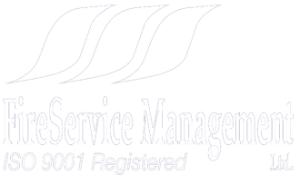Firefighter turnout clothing and its ability to resist penetration by moisture (especially water) has been an important part of fire service discussion for many years. Recently, however, and thanks in part to advances… in technology, that discussion has escalated into a ‘two-alarm’ crisis.
To perform effectively over time, moisture barriers must be thin yet durable – a complex combination in a profession as rugged as firefighting. But it does not necessarily have to be a tradeoff. In my experience effective performance over time (or quality and durability) is mostly dependent on two choices -how you choose your moisture barrier, and how you maintain it.
What Does It Do?
Moisture barrier membranes are an integral component of the modern three-layer firefighting ensemble. As the middle component between the ‘thermal protective’ inner-layer and the ‘flame resistant’ outer-shell, moisture barriers are primarily designed to protect firefighters from penetration by moisture (water), common chemicals and bacteriophage (body fluids). While it would have been easy to accomplish this by building a moisture barrier totally impervious to these liquids, it would then have meant that firefighters were wrapped in a water-tight envelope, which would also not dissipate body heat and, therefore, significantly increase the risk of heat stress. Realizing this, fire service professionals have demanded that moisture barriers also be ‘moisture vapour permeable’ – commonly called “breathable”. This quality permits moisture (sweat) to evaporate, thereby creating a cooling effect and increasing the total heat loss (THL) to the firefighter. In addition to breathability, moisture barrier manufacturers are also facing increasing demand to decrease the product weight while increasing the comfort (flexibility).
There are a number of moisture barrier brands on the market designed to comply with the most popular relevant fire service standards – NFPA 1971 (1997-2000 editions) and CAN/CGSB 155.1-98.
How Do I Inspect It?
Most firefighters have never actually seen or touched the moisture barrier in their turnout suit and probably have no idea what brand it is – despite that they depend on its technology to reduce their risk on the fireground. This is not surprising sicne, to properly see the moisture barrier, one has to open a seam or the binding tape and turn the thermal liner inside out. The actual moisture barrier membrane is typically thinner than a piece of paper and looks, and feels, like plumbers tape. The membrane is either laminated or coated onto a fire resistant substrate, which is then sewn onto the thermal liner. Thus, much of a firefighter’s health and safety is dependent on a micro-thin fabric that we could easy tear with our hands.
The most often asked question I receive about turnout clothing, and the most difficult to answer, is: How long does bunker gear last? Such an answer has to be considered in the context of the three main safety features performed by the gear (which are directly related to the components:
Flame Impingement
The composition of the outer shell is stable and while it will eventually wear thin, it will normally retain its fire retardant integrity. Notwithstanding, if the outer shell becomes brittle as a result of excessive heat exposure (repeated, prolonged or flash), it should be assessed professionally and either returned to service, repaired or retired.
Thermal Protective Performance
TPP is the ability of all three layers of the suit to absorb and store heat. The National Fire Protection Association (NFPA) has minimum requirements in this regard. Unless there is a major migration of the thermal liner or excessive wear and/or ultra-violet ray (UV) damage (for example by storing gear in the car or leaving outside to dry), the TPP of the original suit construction is usually very consistent and will remain above acceptable.
Moisture Barrier
The moisture barrier is the most difficult component to evaluate because it cannot be easily seen. It can only be evaluated by a visual check and/or a hydrostatic water test, i.e. Water Penetration Test in accordance with NFPA 1971, 1997 ed., Para. 6-27, Procedure B. To complete this test special equipment is required and the moisture barrier must be separated from the thermal liner. However, the results of this test may also be inconclusive because the results from one tested are cannot be generalized over the entire area of the moisture barrier. Moisture barriers do break down over time as a result of excessive heat, chemical challenge, abrasion, wear and improper maintenance and cleaning methods.
Conclusion
Eventually, all bunker gear will need to be replaced. Good ‘rules of thumb’ include opening up and inspecting all bunker gear that has been;
- Challenged by heat and/or chemical exposure;
- In active service for at least five years;
- Washed in hot water (in excess of 140F), and;
- Placed in a tumble clothes dryer.
Further, there has been considerable discussion lately as a result of one moisture barrier manufacturer informing the industry of the possibility of premature degradation of their product. The fire service is being cautioned to be aware of the potential hazard(s). If you have any questions or doubts about the integrity of your moisture barrier, it should probably be inspected and/or tested.
NFPA is currently coming to terms with the need to address the care and maintenance of personal protective equipment (PPE) through draft development of the NFPA 1851 standard. This will represent the first of its kind in North America. Concurrently, fire departments are beginning to address the need for regular, comprehensive inspection, cleaning and maintenance programs.
How turnout clothing performs while it is being used by firefighters is a paramount health and safety issue. The quality of such performance can only be guaranteed by the quality of knowledge the fire service has about the complexities involved and the quality of the ensuing maintenance program.
Greg Nicoll is General Manager of FireService Management. For more information about this article, Greg may be contacted at 416-251-3552, 1-888-731-7377 or greg@safedesign.com.
© 2000 The Fire Services Journal Inc. No part may be reproduced without prior written permission of publisher.
